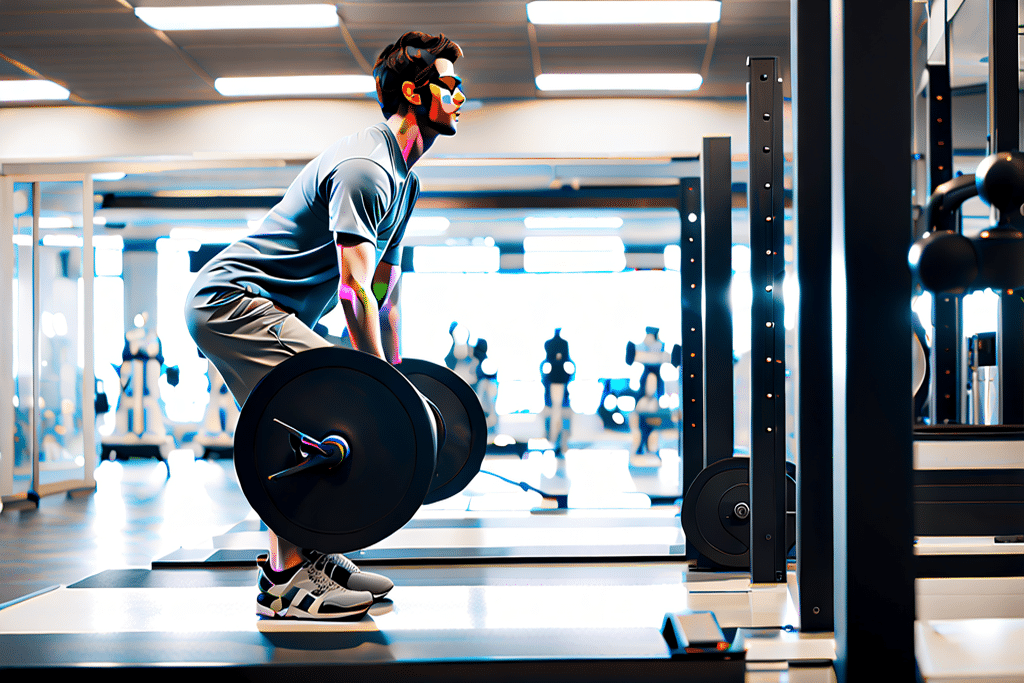Unlocking Strength: Secrets of The Romanian Deadlift and Hip Hinge
Romanian Deadlifts (RDL) are an excellent exercise that directly targets one of the body’s essential movements: The Hip Hinge. Now, I chose to present the idea of Romanian Deadlifts and Hip Hinging in conjunction as a Romanian Deadlift is essential just a weighted hinge. By training this movement correctly, you will successfully train your glutes, hamstrings, upper and lower back while at the same time building massive pulling strength that will transfer to ALL other lifts.
Hip Hinge
To learn how to perform an RDL properly, you must understand how to hip hinge. A hip hinge is an isolated movement of the hips without extra motion from the spine or knee. It is a complete extension of the hips. The key part of hinging is taking the knees and spine out of the movement, to place all the tension on the hip joint which then works your glutes and hamstrings.
If you want to be an effective athlete you need to master the hinge. Most don’t understand the movements of their spine when standing or sitting. When these people go to pick something up there’s a mixture of squatting and rounding of the back.
Performing an RDL
The Hip Hinge is customizable based on your build. The reason the exercise is the best for training a hip hinge is that you can safely load up weight while providing a great stretch to the glutes and hamstrings, allowing your lower back to finally relax.
The goal of a successful RDL is to place all the tension onto the glutes and hamstrings while keeping the least amount of tension on your lower back. So this is where most fail the movement. To begin, you want to brace your core and maintain a neutral posture. Then, the first movement of the hip hinge is bending at the hip by pushing the hips backward while keeping a neutral spine. Only go as you as you can feel the tension on your hamstrings and glutes. If your lower back starts to round or engage, lower the weight or refrain from that depth.

Glutes and Hip Hinging
If you want to grow your glutes prioritize hip extension. The primary function of the glutes is hip extension. The glute’s primary job is to contract to push the hips forward in extension. When your hip hinge is not fully developed, you will naturally round your back to compensate. This places all of the tension on your spine, developing your paraspinal muscles, and reinforcing this incorrect form. Your deadlifts and rdls will get weaker as a result.
Mobility in the Hamstrings
Performed correctly, RDL exercises have the potential to enhance flexibility in the hips, hamstrings, and lower back, leading to improved overall mobility. The hip-hinge movement, central to RDL workouts, aids in enhancing flexibility and extending the range of motion in the hips, hamstrings, and lower back. This will transfer across to multiple areas of life such as prolonged sitting, giving you improved posture and function. Unlocking your hamstrings and unlocking your lower back go hand in hand.
Tight Hamstrings, Tight Lower Back
Tight hamstrings can cause lower back stiffness primarily because they are connected to the pelvis via the pelvis’ posterior aspect. When the hamstrings are tight, they can exert a downward pull on the pelvis, leading to a posterior pelvic tilt. This tilt can flatten the lumbar spine’s natural curvature, resulting in increased pressure on the lower back muscles and joints, leading to stiffness and discomfort. Additionally, tight hamstrings can limit pelvic mobility and range of motion, causing hip tightness as well, further exacerbating lower back stiffness.
With posture and proper biomechanics if one area of your body is tight or weak it causes imbalances everywhere. So it’s important to take it one step at a time. Eliminate weakness in one area and move to the next until you flow through life.
Proper Pulling
With proper pulling mechanics, there are queues you need to watch out for. Proper pulling technique and hip hinging require various micro-movements and queues to execute effectively. The most important ones to remember are to keep the knees slightly bent, even at the top part of your range. Learning to brace, keeping the pelvis down, and moving the hips back to start the movement will automatically set you up to perform a perfect repetition.
When you bend over in a compromising position such as the hip hinge the most important thing is to keep a neutral spine. There should be no rounding of your spine on this movement. Keeping a neutral spine will allow the hamstrings and glutes to be the main contributors and place the majority of the load onto those muscles. Hinging with a rounded back will lead to tight and sometimes overdeveloped erector muscles that contribute to various postural issues.
Why Hinging Is Important
Learning how to optimally hinge and then load the movement with resistance comes with numerous advantages. It is one of the body’s primary movements and it will effectively save the lower back. Lifting everyday objects will become much easier and less harsh in the long run. 99% of people who have back pain or back problems have a weak and ineffective hip hinge.
Besides the huge capacity for strength, there are few muscles that, when developed, give you the same tactile sense of being rooted and stable throughout the body as developing power and size. I’m here to expose these movements so you can move freely and without pain.

